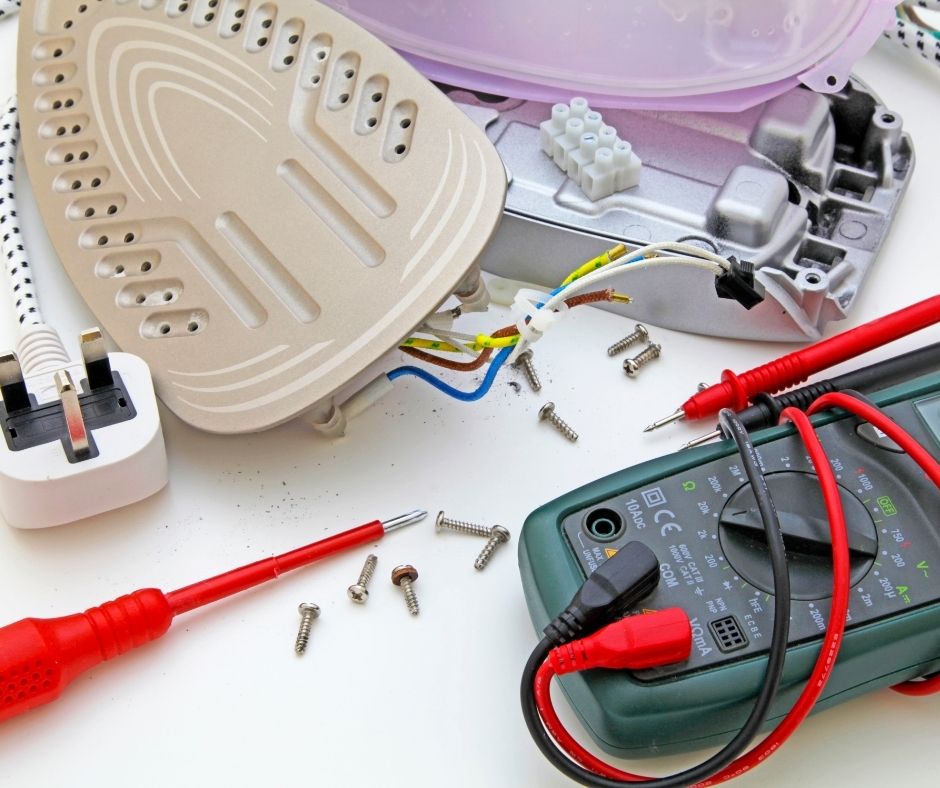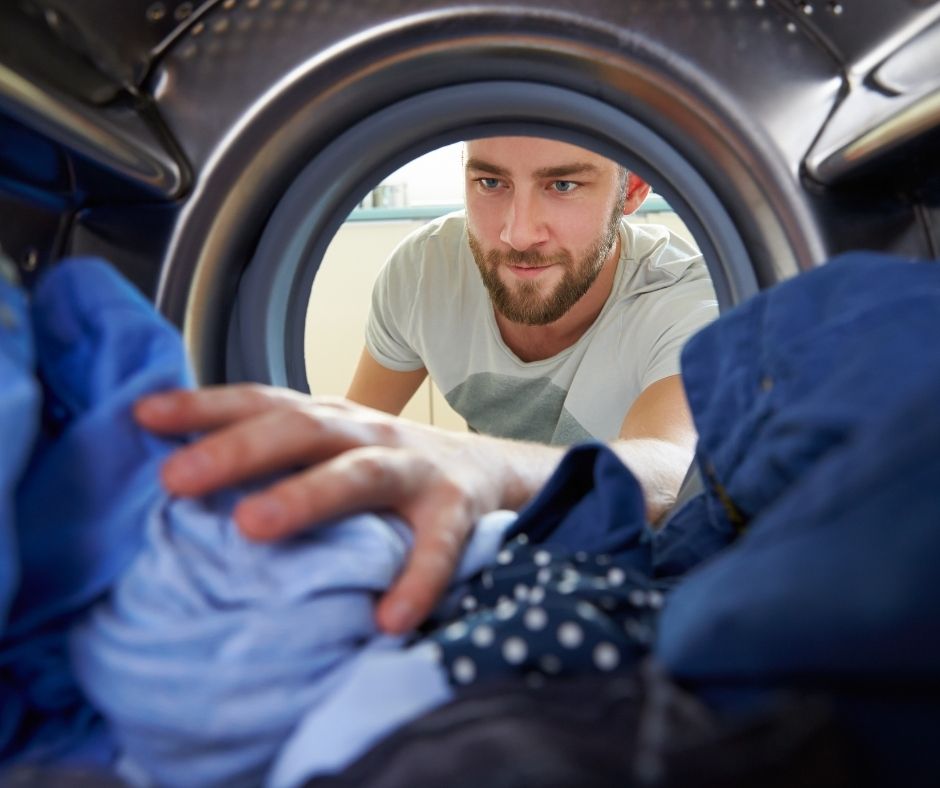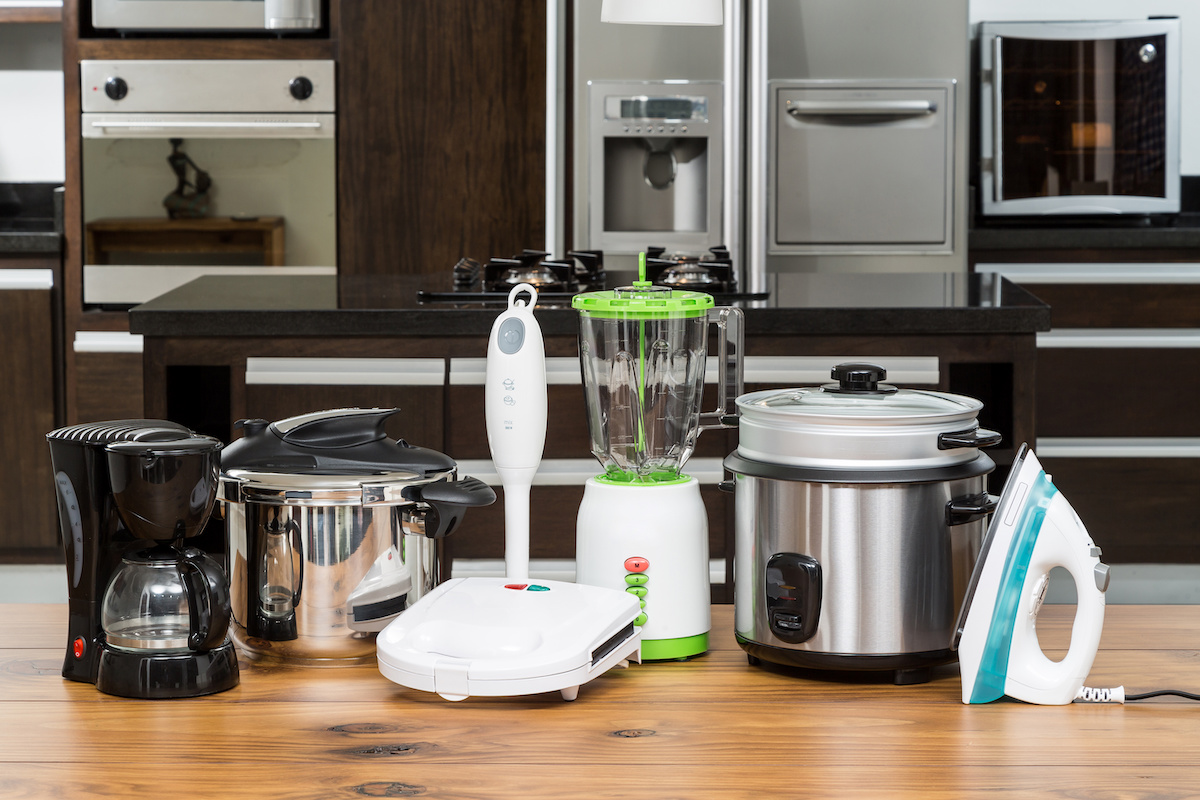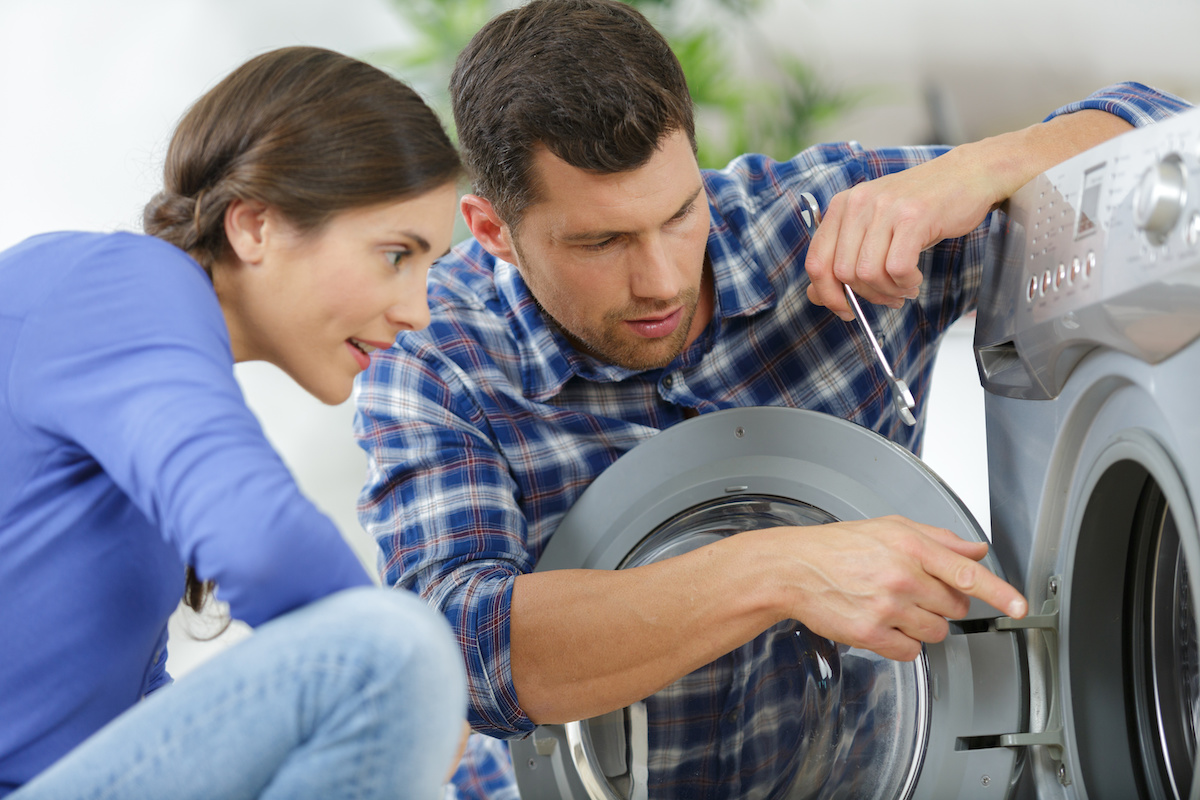
Washer and Dryer Repair Tips You Need to Know
Washers and dryers are essential appliances that make our daily lives more convenient. When they work well, they save us time and effort, ensuring our clothes are clean and dry. However, like any other machine, washers and dryers can encounter issues that require repair.
In this article, we will explore some of the most common washer and dryer problems and provide you with valuable repair tips to help you address these issues.
By understanding the basics of washer and dryer repair and maintenance, you can:
- Save money
- Prolong the lifespan of your appliances
- Keep your laundry routine running smoothly
Common Washer Problems and Repair Tips
1. Washer Won’t Start
- Check the Power: Ensure that the washer is plugged in and that there’s power in the outlet. You may need to reset the circuit breaker or replace a blown fuse.
- Lid Switch or Door Lock: If the washer has a safety switch that prevents it from starting with an open lid, it might be malfunctioning. Test it and replace it if necessary.
2. Washer Doesn’t Drain or Spin
- Drain Pump: The issue may be a clogged or malfunctioning drain pump. Remove any blockages and check the pump for damage.
- Lid Switch or Door Lock: Just like in the case of not starting, the lid switch or door lock may also affect the draining and spinning functions. Test and replace if necessary.
3. Washer Leaks
- Hoses and Connections: Check all hoses and connections for leaks. Tighten any loose connections and replace damaged hoses.
- Tub Seal or Gasket: If you notice water under the washer, it may indicate a damaged tub seal or gasket. These can wear out over time and will need replacement.
4. Excessive Noise During Operation
- Leveling: Ensure that the washer is level on the floor. Adjust the feet as needed to eliminate any wobbling or rocking.
- Damaged Drum Bearings or Suspension Springs: If you hear loud noises during the spin cycle, the drum bearings or suspension springs may be damaged and require replacement.
5. Washer Smells Bad
- Clean the Washer: Use a washer cleaner or a mixture of vinegar and baking soda to clean the drum, gaskets, and detergent dispenser. Leave the door ajar between cycles to allow it to dry and prevent mildew growth.
- Clean the Drain Pump Filter: Lint, debris, and detergent buildup in the drain pump filter can contribute to odors. Regularly clean this filter.
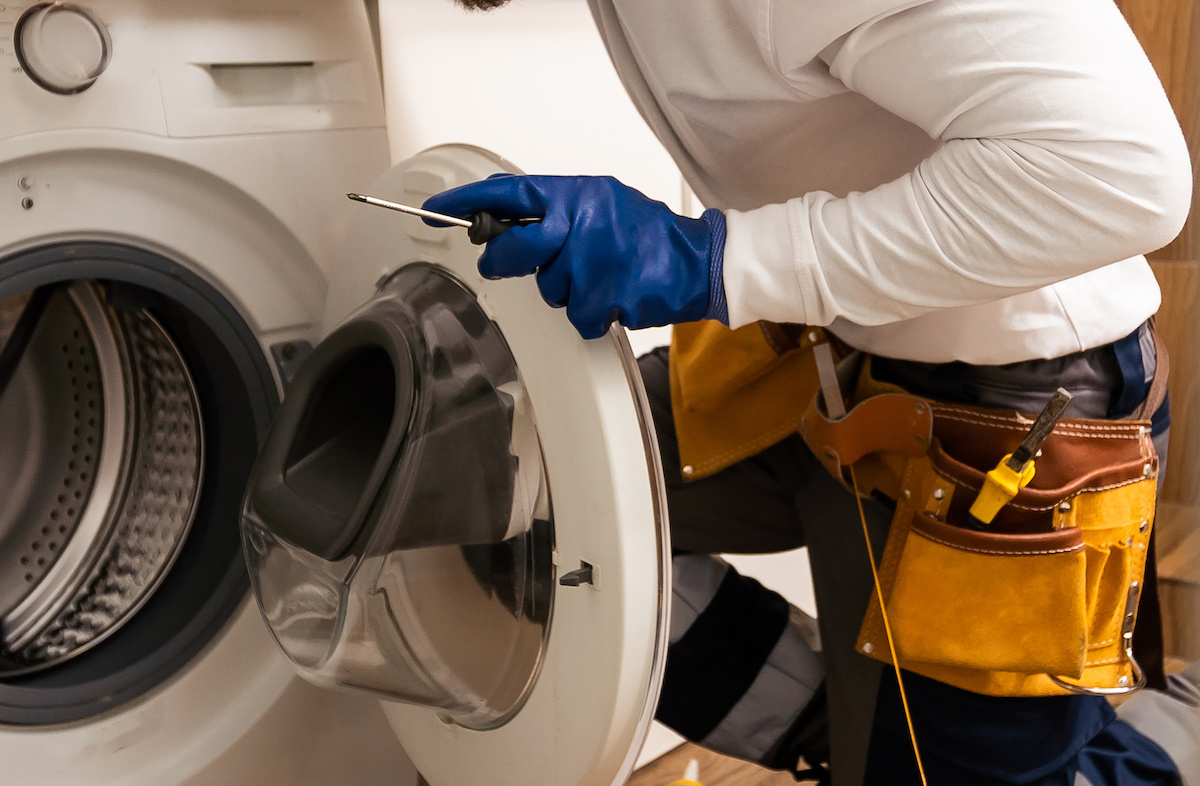
Common Dryer Problems and Repair Tips
1. Dryer Doesn’t Heat
- Check the Power: Ensure the dryer is plugged in and that the circuit breaker hasn’t tripped. Replace any blown fuses or reset the breaker if necessary.
- Thermal Fuse: A blown thermal fuse is a common cause of no heat. It’s a safety feature that can fail over time. Test and replace it.
- Heating Element: If the heating element is faulty, it won’t generate heat. Check for continuity and replace it if necessary.
2. Dryer Overheats
- Ventilation: Poor ventilation can cause the dryer to overheat. Ensure the vent and exhaust ducts are clear and not obstructed.
- Thermostat: A malfunctioning thermostat can result in overheating. Test and replace it if needed.
3. Dryer Takes Too Long to Dry Clothes
- Ventilation: As with overheating, poor ventilation can also cause drying times to be extended. Ensure the vent and exhaust ducts are clear.
- Lint Filter: A clogged lint filter can restrict airflow and prolong drying times. Regularly clean the lint filter after each cycle.
4. Dryer Makes Unusual Noises
- Belt or Rollers: Squeaking, thumping, or scraping noises may be due to a worn-out belt or damaged rollers. Inspect and replace them if needed.
- Motor: If you hear a humming noise or the motor isn’t running smoothly, the motor may be failing and require replacement.
5. Dryer Doesn’t Turn On
- Check the Power: Verify that the dryer is plugged in and that there’s power in the outlet. Test the circuit breaker or replace blown fuses.
- Door Switch: The dryer won’t start if the door switch is faulty. Test and replace it if necessary.
Maintenance Tips for Washers and Dryers
Preventing issues in the first place is always preferable to repairing them. Here are some maintenance tips to help keep your washers and dryers in good working condition:
1. Clean the Lint Filter and Ducts
In dryers, clean the lint filter after every cycle. Regularly inspect and clean the exhaust duct and vent to prevent lint buildup, which can lead to reduced airflow and potential fire hazards.
2. Use the Right Detergent
For washers, use the correct type and amount of detergent for your machine. Using too much detergent can lead to residue buildup and affect washer performance.
3. Balance the Load
Overloading or underloading the washer can affect its performance and cause excessive wear and tear. Follow the manufacturer’s guidelines for load sizes.
4. Keep the Washer Door Ajar
After each use, leave the washer door slightly ajar to allow air to circulate and prevent mildew and odors.
5. Check and Replace Hoses
Regularly inspect washer hoses for signs of wear or damage. Replace them every few years, even if they appear to be in good condition, to prevent potential leaks.
6. Level the Appliances
Ensure that both your washer and dryer are level on the floor. Use a level and adjust the feet if necessary. An unlevel appliance can cause vibration and noise.
When to Call a Professional for Washer and Dryer Repair
While many washer and dryer issues can be resolved with DIY repairs, there are situations where it’s best to call a professional technician. Consider professional help when:
Complex or Technical Issues
If the problem is beyond your expertise, it’s advisable to seek professional assistance. Some issues involve intricate components, electrical systems, or specialized tools that require the knowledge and skills of an experienced technician. Attempting complex repairs without the right understanding can lead to further damage or safety hazards.
Safety Concerns
Safety should always be a top priority when dealing with appliances, especially those that involve electricity and moving parts. If you’re unsure about the safety of a repair task or if you suspect that the repair might pose a risk to you, your home, or your appliance, it’s time to contact a professional. They have the training and safety measures in place to handle potentially hazardous situations.
Under Warranty
If your washer or dryer is still under warranty, performing DIY repairs can void the warranty. Manufacturers often specify that only authorized technicians should service their appliances during the warranty period. To maintain your warranty coverage, consult the manufacturer’s guidelines and contact their recommended service provider for repairs.
Previous DIY Attempts Failed
If you’ve tried DIY repairs and the issue persists or worsens, it’s a clear sign that professional help is needed. Repeated attempts to fix the problem without success can cause more damage, ultimately resulting in higher repair costs.
Specialized Tools and Parts
Some repairs may require specialized tools or replacement parts that are not readily available to homeowners. A professional technician will have access to the necessary equipment and genuine replacement parts, ensuring a proper and lasting repair.
Time and Convenience
Instead of grappling with complex installation instructions and potentially making mistakes, you can rely on a trained technician to handle the job efficiently and effectively. This saves you time and effort, allowing you to focus on other priorities.
Quality Assurance
Professional technicians are trained and certified to provide quality service. They are well-versed in the latest repair techniques, and their work is backed by warranties and guarantees. When you hire a professional, you can have confidence in the repair’s quality and longevity.
Old or High-Value Appliances
For older or high-value appliances, it’s often wiser to invest in professional repairs. They can extend the lifespan of your appliances, potentially saving you the cost of a replacement. Professionals can assess the overall condition of the appliance and make informed recommendations on whether repair or replacement is the better option.
Knowing when to call a professional for washer and dryer repairs is crucial for both safety and cost-efficiency. While many minor issues can be resolved through DIY efforts, it’s essential to recognize your limitations and prioritize your safety and the reliability of your appliances.
When in doubt or when facing complex problems, enlisting the expertise of a professional technician is a wise and practical choice that can extend the life of your appliances and ensure the continued smooth operation of your laundry routine.
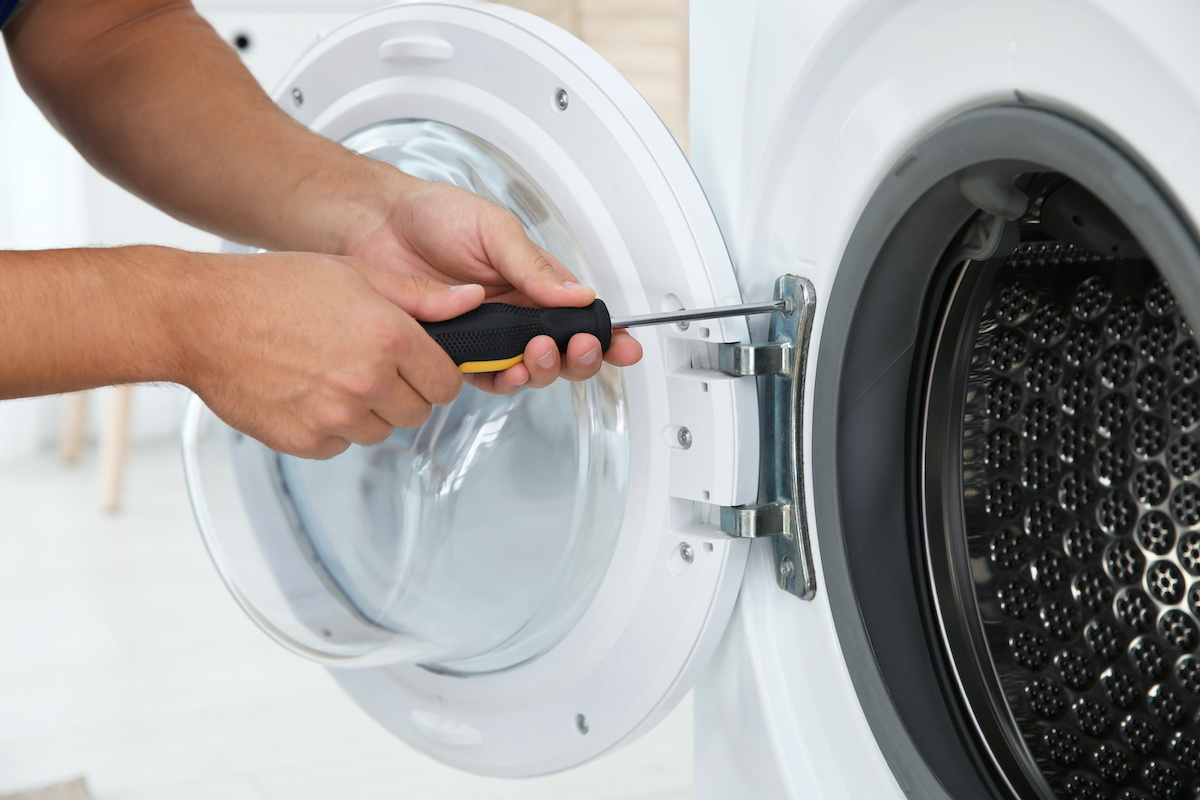
Searching for Washer and Dryer Repair Services?
By understanding these common washer and dryer problems and the associated repair tips, you can effectively troubleshoot and address issues that may arise. Regular maintenance and timely repairs can extend the lifespan of these essential appliances, saving you time, money, and the inconvenience of laundry disruptions.
However, always prioritize safety, and when in doubt, seek professional assistance to ensure that your washers and dryers continue to serve you reliably for years to come. If you’re searching for a washer and dryer repair service, reach out to Atlanta Repair Services for support!

